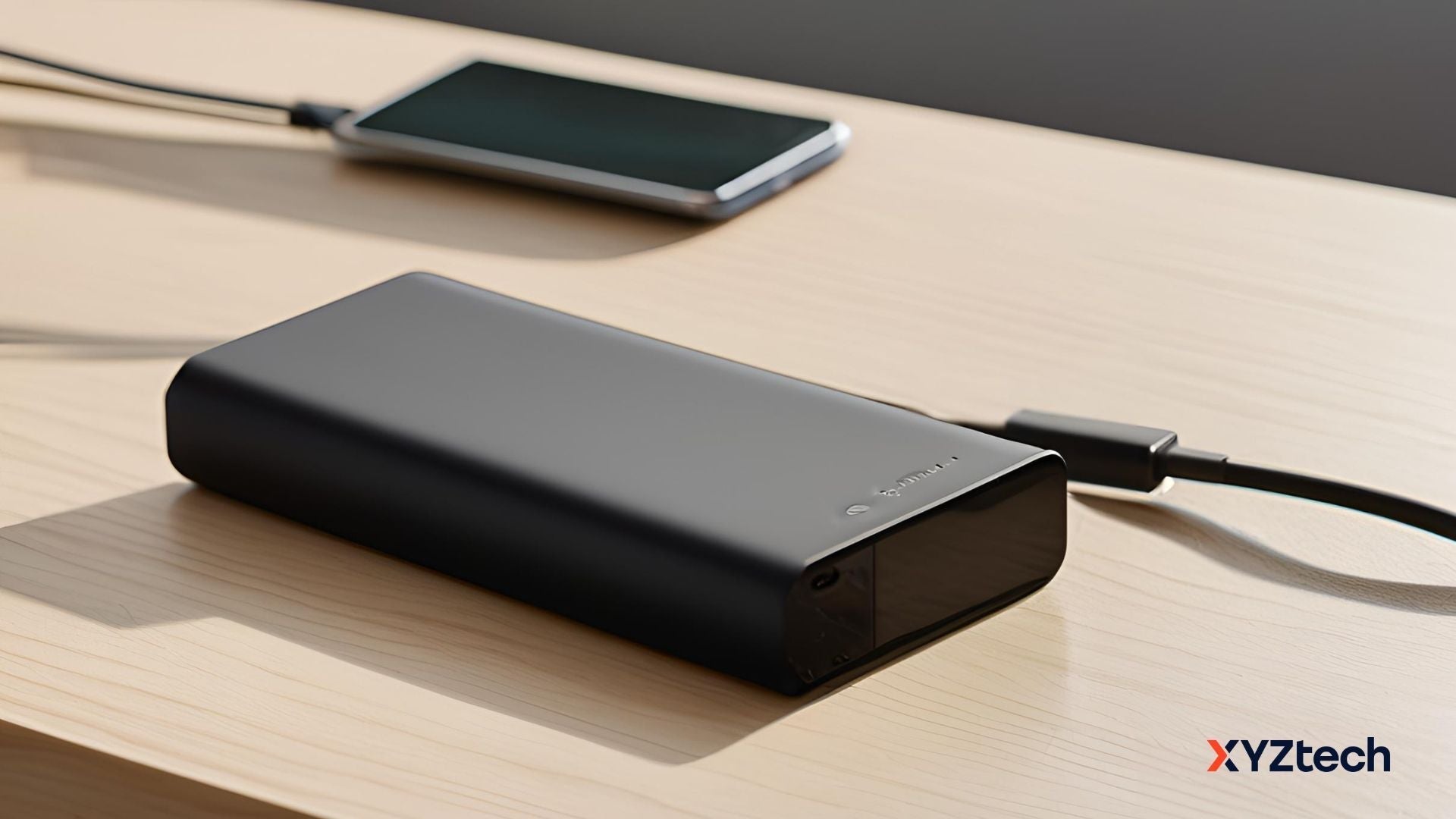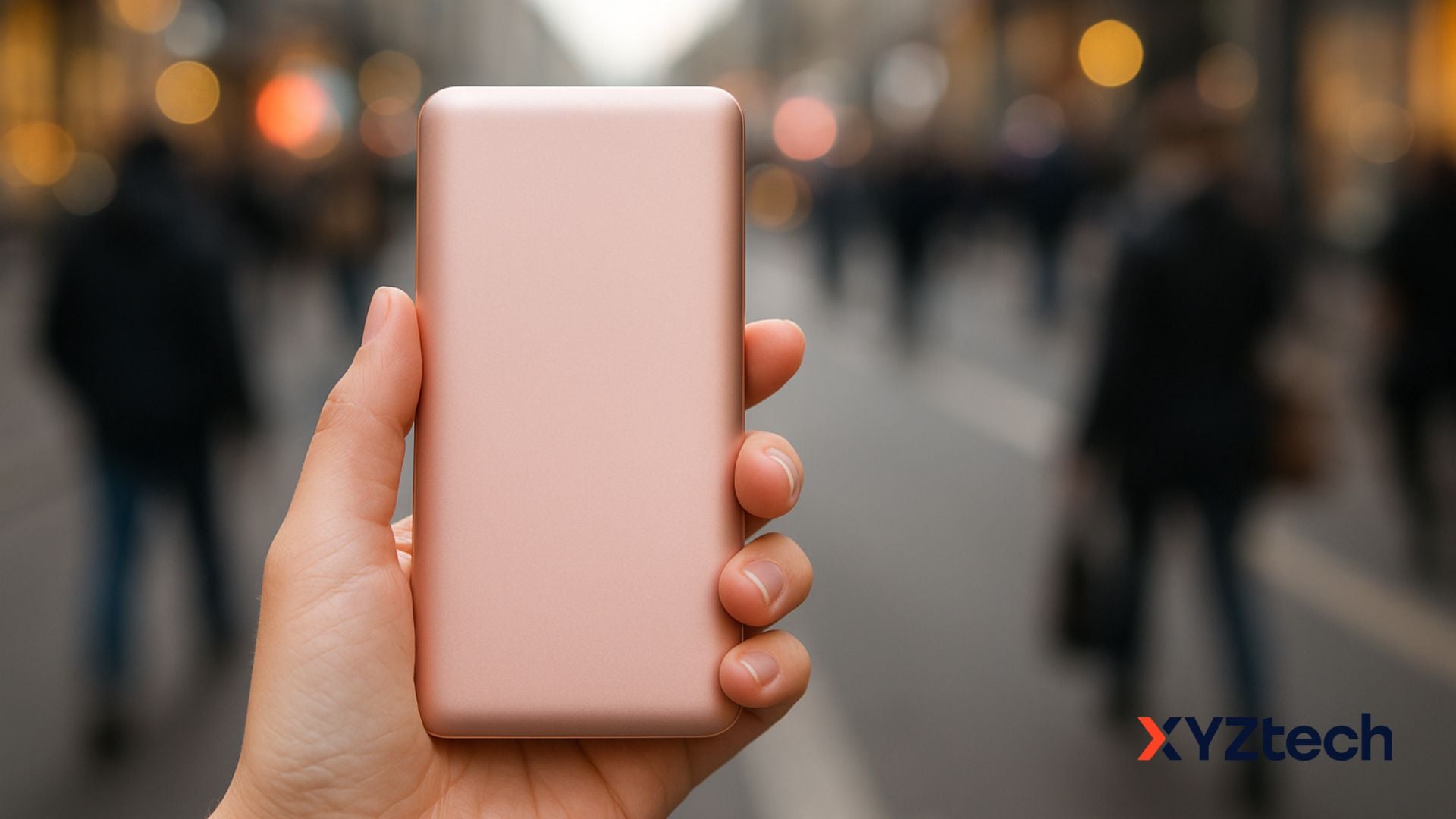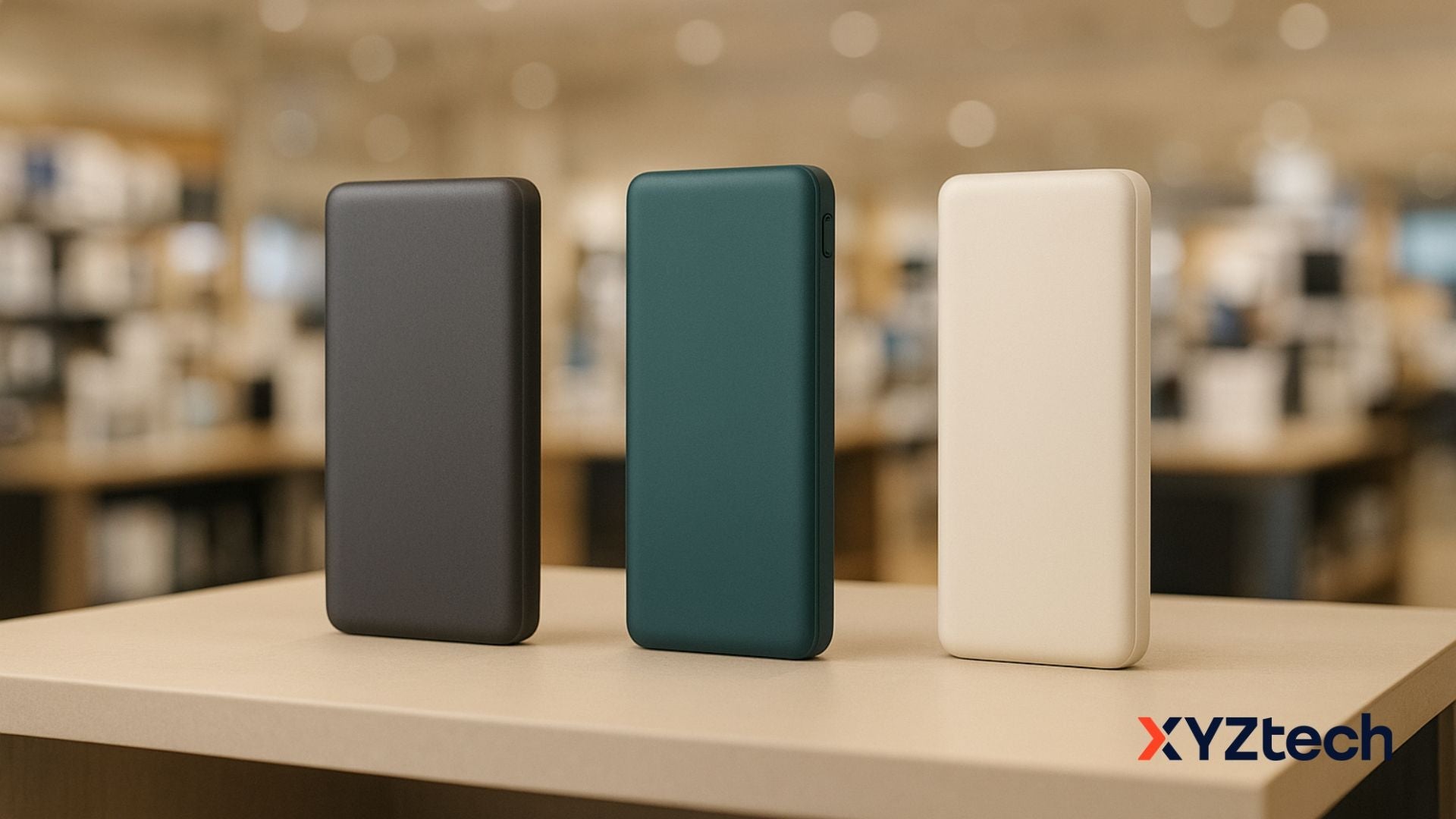How to Use a Power Bank for the First Time: Steps and Tips

Wondering how to use a power bank for the first time to make sure you’re doing it right and protecting both the power bank and your device? A power bank can be a lifesaver when your phone is low on power, but using it correctly from the start ensures you get the most out of it and avoid potential issues down the line.
In this guide, we’ll cover everything you need to know—from how to charge power bank for the first time to tips on how to use its cable and ports effectively—so you’ll be confident that you are doing it right and you can use it for a long time.
In this article:
- Must-Do Tips for First-Time Power Bank Users
- How to Use a Power Bank: First-Time Charging
- Key Takeaways: How to Use a Power Bank for the First Time
- FAQs
Let’s get started!
Must-Do Tips for First-Time Power Bank Users
Before anything else, follow these helpful steps to get the best performance from your new power bank right from the start:
- Consult the User Guide: Check the manual for information on compatible chargers, power sources, and recommended cables. This will help you choose the right accessories.
- Verify Battery Level: Most power banks have a button that shows the charge level with LED lights. If all LEDs are on, it’s fully charged; if none are lit, connect it to a charger before use.
- Understand Pass-Through Charging: If you want to charge devices while the power bank is charging, ensure it supports pass-through charging. Without this feature, energy can be lost as heat.
- Try Charging Smaller Devices First: Start by charging a small device, like wireless earbuds or a smartwatch, to ensure everything works correctly and meets your speed expectations before moving on to larger devices.
So, How to Use a Power Bank for the First Time?
Here are some steps on how to use a power bank, from how to charge power bank for the first time to using the cables and ports, along with some helpful tips.
How to Charge Power Bank For the First Time?
Before first use, charge your power bank fully. The charging time can vary depending on the capacity of the power bank and the power output of your charger. Here is the step-by-step guide how:
Step 1. Check the Current Battery Level: Press the power button to check if your power bank needs charging. If all LED lights are on, it’s fully charged and doesn’t need recharging.
Step 2. Choose the Right Charger: Use a high-quality charger compatible with the power bank to avoid overheating or slow charging. If a specific charger is recommended, using it will help ensure optimal battery performance.
Step 3. Locate the Input Port: Look for the “Input” port on your power bank, which is where you’ll connect the charging cable. Clean any dust from the port with a cloth for a solid connection.
Step 4. Connect to a Power Source: Plug the charger into a stable power source, like a wall outlet or USB port. Third-party power banks are often compatible with various sources but make sure the outlet or USB is stable for safe charging.
Step 5. Insert the Charging Cable: Connect the appropriate charging cable, whether it’s USB-C, micro-USB, or Lightning, into the power bank’s input port.
Step 6. Check the Indicator Lights: LED lights will usually flash to indicate active charging. When all lights are solid, it means your power bank is fully charged.
Step 7. Allow It to Charge: Charging times vary by capacity:
- Small power banks (5,000-7,500mAh) take about 1.5-3 hours.
- Medium power banks (10,000-15,000mAh) typically need 3-6 hours.
- Large power banks (20,000mAh+) may need 6+ hours.
To know more, check "How Long Do Power Banks Last?" guide.
Step 8. Monitor the Charging Process: Avoid using the power bank while it’s charging, and don’t leave it plugged in overnight to prevent overheating.
Step 9. Unplug the Charger: Once fully charged, unplug the charger and let the power bank cool down if needed.
Step 10. Ready for Use: Your power bank is now ready to use for charging your devices, whether it’s a phone, smartwatch, or tablet.
Important Note: Recharge before your battery gets too low. Draining power bank batteries too much can harm them and shorten their lifespan. For the best performance, charge these batteries before they drop below 10%.
Tips on How to Charge Power Bank for the First Time
- Use the Right Charger: Always use the manufacturer's charger or one with compatible specifications. Incompatible chargers can slow down charging and damage the internal system.
- Check the Power Source: Ensure the power source is stable. While a fully charged laptop can work, it may charge slowly. A reliable source, like a portable power station, provides consistent power.
- Avoid Overcharging: Unplug the power bank once it reaches 100%. Overcharging can degrade lithium-ion batteries and reduce lifespan, potentially causing hardware issues.
- Charge Before Use: If your power bank has been unused for a while, charge it to 100% before the first use. This helps calibrate the battery for maximum efficiency.
- Recharge Before Low Levels: Draining a power bank to excessively low levels can be harmful, weakening the battery and reducing its lifespan. For optimal performance, it's best to recharge these batteries before they fall below 10%.
How to Use Power Bank Cables and Ports?
Understanding your power bank’s ports and cables is essential in learning how to use a power bank for the first time, as it's also a key to maximizing its performance and avoiding potential damage.
In this section, you'll learn how to identify the right ports, choose compatible
cables, and safely use features like fast and pass-through charging.
-
Identify the Ports
- Input Port: How to charge power bank for the first time? First, you should look for the input port. This is where you charge the power bank itself. Look for a port labeled "Input" or with a symbol showing the charging direction. It could be a USB-C, micro-USB, or Lightning port.
- Output Port: This is where you plug in devices like your phone or tablet to charge them. It’s usually labeled "Output." These are often USB-A (the regular USB port), USB-C, or sometimes Lightning for Apple devices.
-
Choose the Right Cable
- USB-A Cable: This is the standard USB cable, often with different ends like USB-C or Lightning, depending on your device. It fits into USB-A output ports on your power bank.
- USB-C Cable: Common for newer devices, this cable type can work for both input and output on many power banks, so you can charge both your phone and the power bank with it.
- Lightning Cable: This is for charging Apple devices, and it might also be used to charge the power bank if it has a Lightning input port.
-
Use Fast Charging (If Available)
Some power banks support faster charging through USB-C ports with Power Delivery (PD) technology. Check if your device supports fast charging to use this feature.
-
Pass-Through Charging
If you want to charge your device (like your phone) while the power bank is also charging (like when you plug it into a wall outlet), make sure the power bank has pass-through charging. This feature allows both to charge at the same time.
Be careful: If your power bank and device try to charge each other without this feature, they can waste energy and heat up, which drains both batteries quickly. Always check that the power bank you’re buying supports pass-through charging if you need this feature.
Tips for Using Ports and Cables
- Check the Lights: Most power banks have indicator lights to show the battery level. This helps you know when it’s time to recharge the power bank.
- Use Good-Quality Cables: Using a sturdy, quality cable prevents overheating and makes charging more reliable.
- Check Compatibility: Make sure your power bank can fast charge your devices. Not all power banks do this.
- Monitor Power Flow: If your device charges slowly, check if you’re using the right ports and cables.
Key Takeaways: How to Use a Power Bank for the First Time
Learning how to use a power bank for the first time properly can make a big difference in its performance and lifespan. In this guide, we’ve covered key steps, including how to charge power bank for the first time, using the correct cables and ports, and essential tips like pass-through charging.
Key Takeaways:
- Charge Fully Before First Use: Ensure your power bank has a complete charge before using it.
- Check Compatibility: Use high-quality chargers and cables to prevent overheating and ensure efficient charging.
- Understand Ports and Features: Familiarize yourself with input/output ports, especially if your power bank supports pass-through charging.
- Monitor Charging Levels: Keep an eye on indicator lights and avoid overcharging to preserve battery health.
By learning the right way to use your power bank from the beginning, you can enjoy reliable power on the go and avoid potential pitfalls that could cost you in the long run.
FAQs
How to know if my power bank is fully charged?
To determine if your power bank is fully charged, check the LED indicator lights—if all lights are solid, it typically means the device is fully charged. Some models also feature a digital display showing the battery percentage, with 100% indicating a full charge.
Do power banks stop charging when full?
Yes, power banks automatically stop charging once they reach full capacity, thanks to built-in safety features that prevent overcharging. This makes it generally safe to leave them plugged in overnight without risking battery damage. However, to maximize the lifespan of your power bank, it’s still best to unplug it when fully charged.
Over time, power banks naturally lose charge due to self-discharge, a process where they slowly deplete even when not in use. The self-discharge rate depends on the power bank’s quality and capacity, typically around 10% per month.
How many hours should I charge my power bank?
The time it takes to fully charge a power bank depends on the rated input of the power bank and the output of the charger used. Here’s a quick breakdown based on the example of a 10,000mAh power bank with a 5V/2A input rating:
- Using a 5V/1A Charger: This charger provides 1,000mAh, so it would take around 10 hours to charge the power bank fully (10,000mAh ÷ 1,000mAh = 10 hours).
- Using a 5V/2A Charger: This charger provides 2,000mAh, so it would take approximately 5 hours to fully charge the power bank (10,000mAh ÷ 2,000mAh = 5 hours).
The same principle applies when charging your phone: a higher output charger will result in faster charging. Always check both your power bank's and your device’s charging specifications to ensure compatibility.
Related Articles:
What is a Power Bank? A Fundamental Guide for Buyers
Power Bank in Airplane Travel: What’s Allowed and What’s Not




